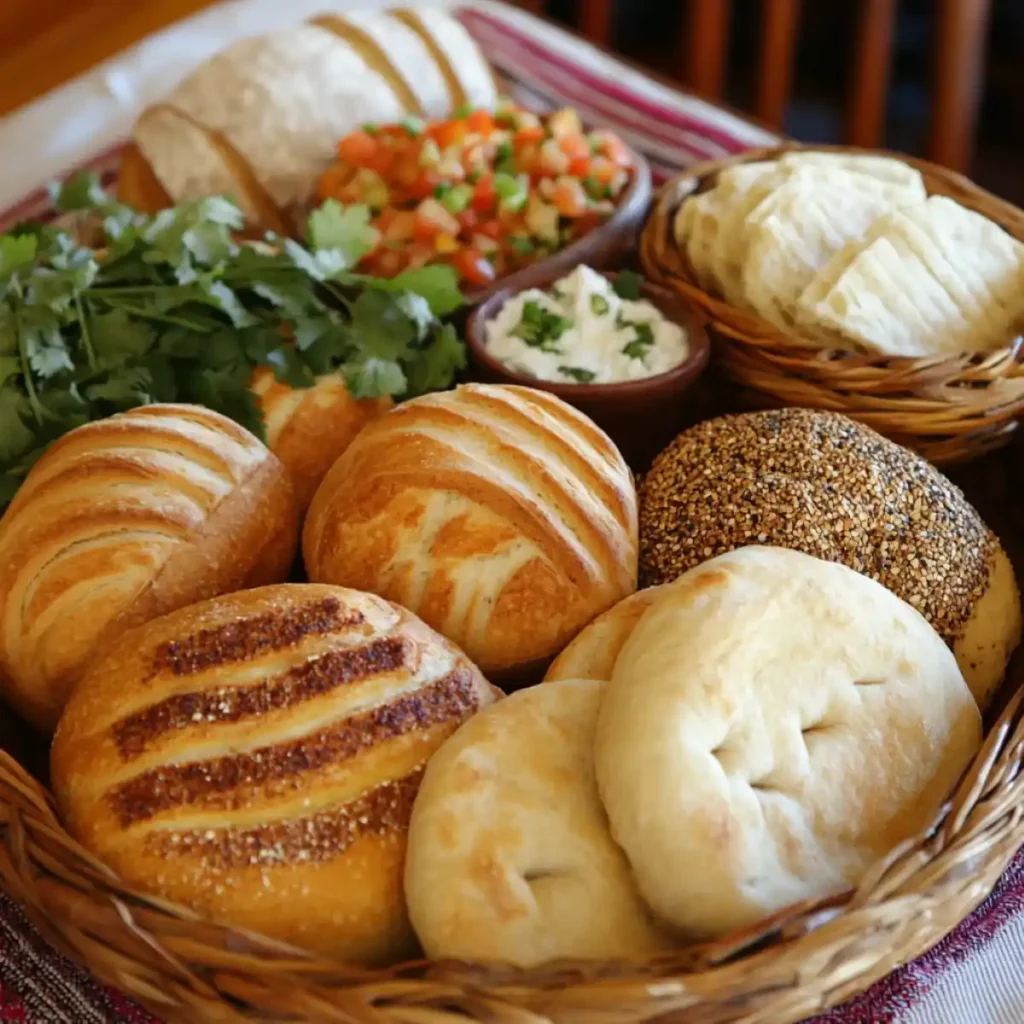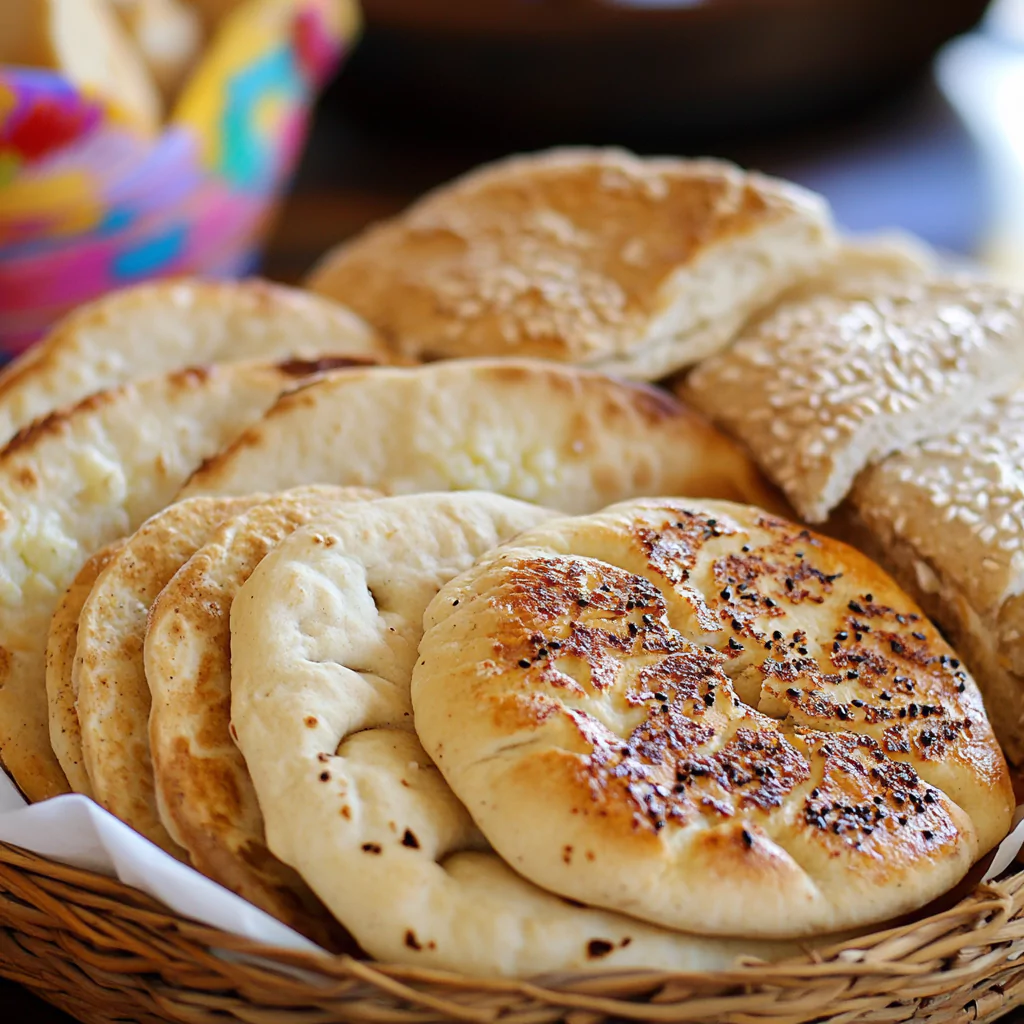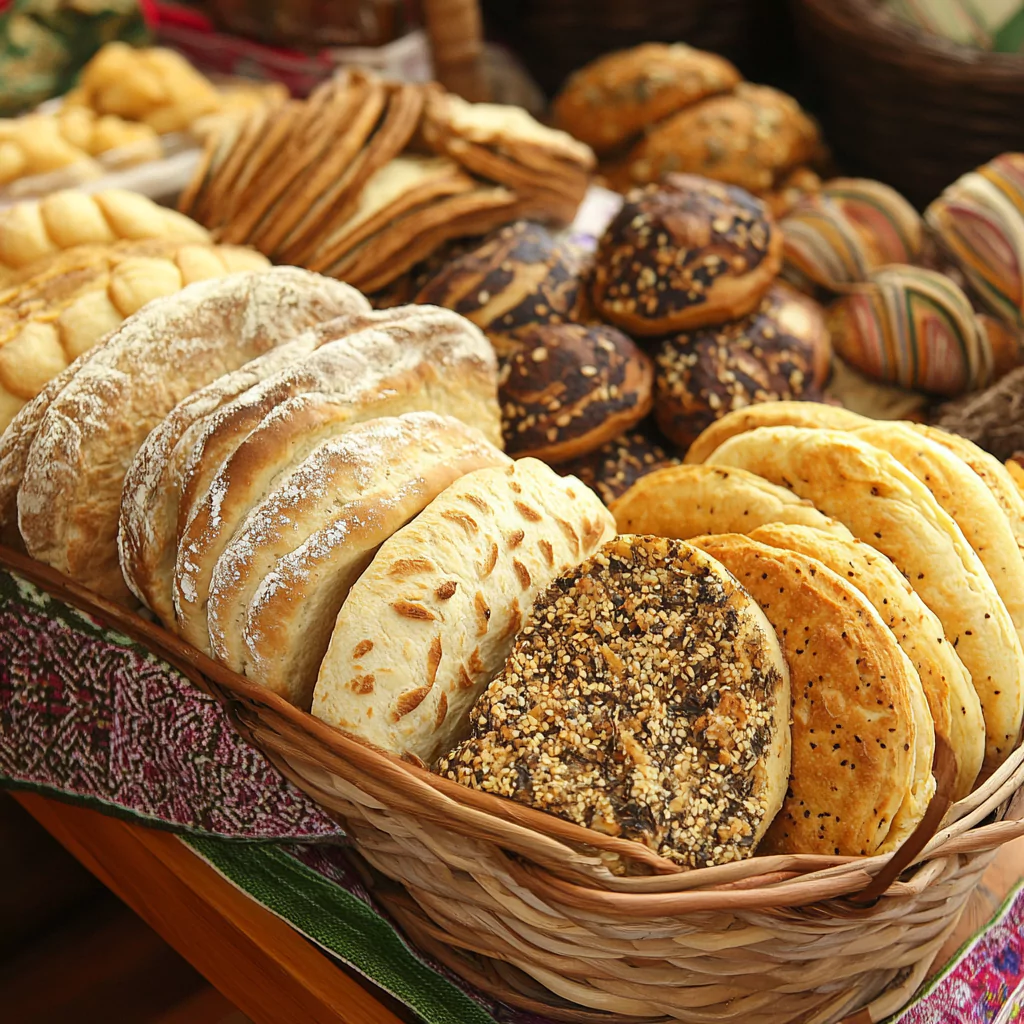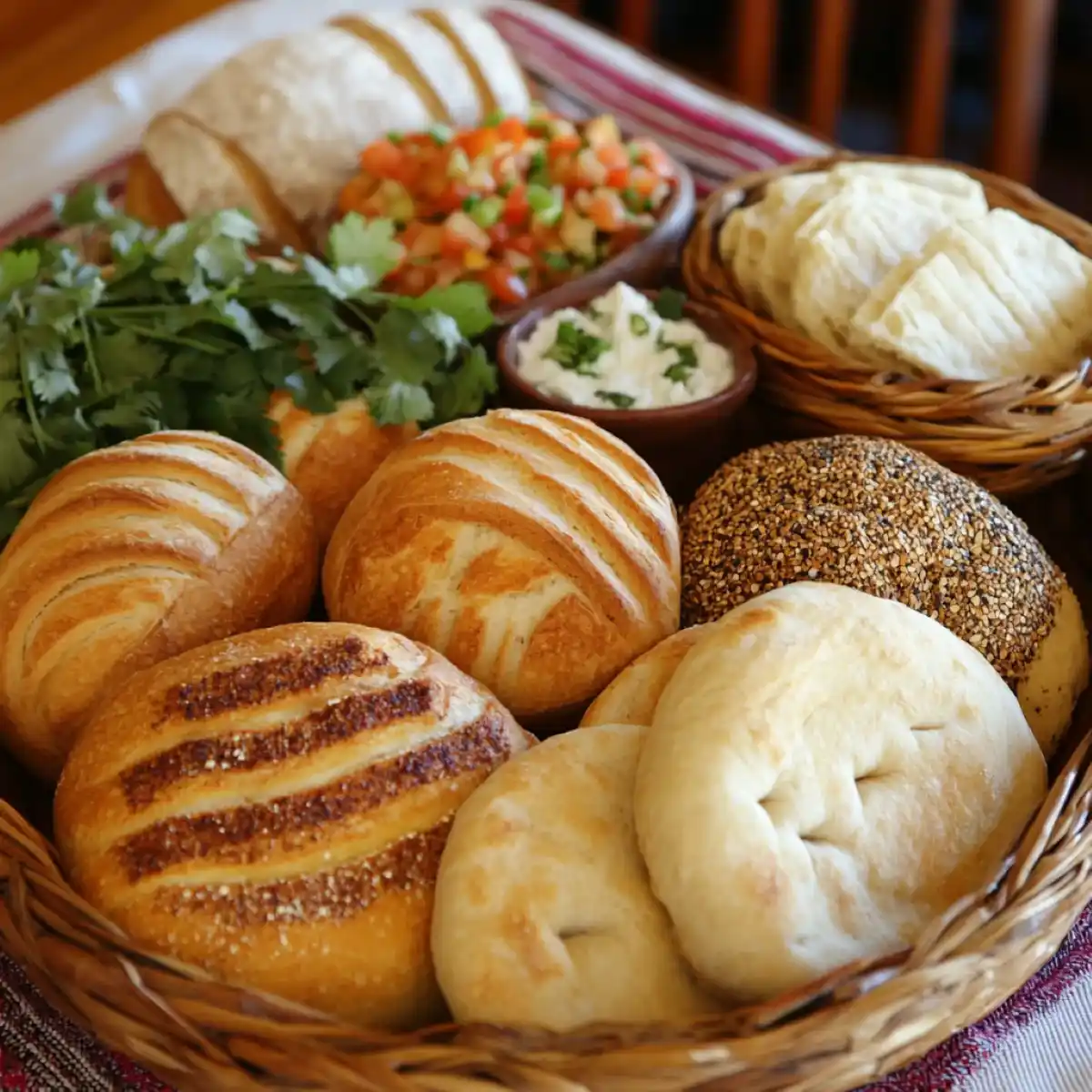Bread plays a significant role in Mexican culinary traditions, intertwining with the country’s rich history and diverse culture. From everyday staples like bolillo to intricate sweet breads used in celebrations, the Types of Mexican Bread vary widely in flavor, texture, and purpose. One might wonder: What is the most popular Types of Mexican Bread? To answer this question, it’s essential to explore the variety of Mexican breads available and their unique roles in everyday meals and festive occasions.

In this article, we will delve into the top types of mexican bread, uncover their cultural and historical relevance, and discover how they continue to captivate the taste buds of Mexicans and bread lovers worldwide.
The Cultural Significance of Bread in Mexico
The Types of Mexican Bread is more than just food; it carries with it a deep sense of tradition and community. The fusion of indigenous and European influences has given rise to a diverse bread culture, where each region boasts its own specialties. Mexican bread culture took shape following the arrival of the Spanish in the 16th century, who introduced wheat, which became a key ingredient for bread-making. Before this, indigenous peoples relied on corn tortillas, an essential component of their diet.
While tortillas remain a staple in Mexican cuisine today, wheat-based breads have taken a firm place alongside them. Daily breads like bolillo and tortillas are central to many meals, while special types of mexican bread like pan de muerto and rosca de reyes are made for specific holidays, reflecting a rich blend of culinary and cultural heritage. Each types of mexican bread have its unique flavor, shape, and significance, with sweet breads, or pan dulce, holding a special place in the hearts of Mexicans.
types of mexican bread are also a social food in Mexico. Families gather around to enjoy pan dulce in the mornings or late afternoons, paired with café de olla (a traditional Mexican coffee) or hot chocolate. The act of sharing bread creates a sense of community, and it often forms the centerpiece of family traditions. To further understand how Mexican bread culture ties into local and family traditions, you can check out Mexican bread history and recipes, which provides insight into the deep roots of Mexican breads.
Exploring the The most popular Types of Mexican Bread
Though Mexican bakeries offer a wide selection of types of mexican bread, certain varieties stand out as the most beloved. Let’s explore the top five Types of Mexican Bread, starting with the one that captures the hearts and taste buds of the entire nation.
1. Concha: The Most Iconic Sweet types of mexican bread
If there is one bread that defines Mexican bakery culture, it’s the concha. Named after its seashell-like appearance, concha is the queen of pan dulce. It features a soft, fluffy dough topped with a crunchy, sweet layer often flavored with vanilla, chocolate, or other variations, depending on the region.
Conchas are typically eaten for breakfast or as an afternoon snack, accompanied by atole (a traditional hot drink made from corn) or café de olla. The texture of a concha is what makes it so special—soft and delicate on the inside with a crumbly, sugary crust on the outside.
This bread has become an iconic part of Mexican culture, and its design is instantly recognizable. Variations of concha have emerged across the country, with different flavors and styles available depending on the region. For instance, some bakeries experiment with colorful toppings like strawberry or matcha, giving the bread a modern twist. The concha continues to be the most popular pan dulce because of its universal appeal and versatility. You can read more about different varieties of pan dulce and how conchas fit into the broader context of Mexican sweet bread here.
2. Bolillo: The Mexican White Bread
When it comes to savory breads, the bolillo reigns supreme in Mexican homes. This small, oval-shaped bread has a crusty exterior and a soft, airy interior, making it the perfect vessel for Mexican sandwiches known as tortas. Bolillo is often compared to French baguettes due to its shape and texture, but it has its own distinct identity in Mexico.
Bolillos are used in a variety of dishes, including tortas, where they are stuffed with a wide range of ingredients like ham, avocado, beans, cheese, and salsa. But that’s not all. Bolillo is frequently served as a side with soups and stews or even eaten simply with butter or cream.
The bolillo‘s simple ingredients—flour, yeast, water, and salt—belie its deep connection to Mexican culinary tradition. It is available in almost every bakery across Mexico, often baked multiple times a day to ensure freshness. Whether it’s paired with a bowl of pozole or used to make a hearty torta, the bolillo has firmly secured its place as a Mexican favorite.
3. Tortilla: The Foundation of Mexican Meals
Though not a traditional bread in the sense of leavened dough, tortillas are undeniably the most consumed bread product in Mexico. There are two primary types of tortillas: corn and flour. Corn tortillas have been part of Mexican cuisine for thousands of years, made from nixtamalized corn, which gives them their distinct flavor and texture. On the other hand, flour tortillas, introduced after the arrival of wheat, are softer and thinner, commonly used for dishes like burritos and quesadillas.
Tortillas are a crucial part of nearly every meal in Mexico, whether used to wrap tacos, make enchiladas, or serve as the base for quesadillas. Corn tortillas are often preferred for more traditional dishes, while flour tortillas are favored in northern Mexico. Their versatility and affordability make them an essential component of the Mexican diet.
Moreover, tortillas are consumed fresh daily, with many families buying them from tortillerías (tortilla shops) or making them at home. Tortillas also play an essential role in special events and celebrations, often accompanying more elaborate dishes like mole or barbacoa.
For more details about tortilla recipes and how they are incorporated into various Mexican dishes, explore traditional Mexican recipes like chorizo tacos, which showcase the versatility of tortillas in Mexican cuisine.
4. Rosca de Reyes: Bread for the Kings
One of the most festive breads in Mexico is the rosca de reyes, also known as Three Kings Bread. This sweet bread is made in celebration of Día de Reyes (Three Kings Day), which occurs on January 6th. The bread itself is shaped like a large, oval ring and is adorned with dried fruits and sugar.
But the rosca de reyes is more than just a delicious treat. It’s also a symbol of a religious tradition, commemorating the visit of the three wise men to baby Jesus. Inside the bread, a small figurine of baby Jesus is hidden, and the person who finds it in their slice is expected to host a party on Día de la Candelaria (Candlemas) on February 2nd.
This bread is typically enjoyed with hot chocolate or atole, and the tradition of sharing the rosca de reyes brings families and friends together. The cultural significance of the bread, combined with its delicious flavor, has made it a beloved part of Mexican festivities.
5. Pan de Muerto: A Sacred Offering
Pan de muerto, or “bread of the dead,” is another highly symbolic bread in Mexico, baked for the Day of the Dead (Día de los Muertos) celebrations, which take place on November 1st and 2nd. This holiday honors deceased loved ones, and the bread plays a central role in the ofrendas (altars) created in their memory.
Pan de muerto is typically round, with bone-shaped decorations made from dough placed on top to represent the deceased. It is lightly sweetened and flavored with orange blossom water or anise, giving it a unique and aromatic taste. While it’s primarily consumed during Día de los Muertos, many people enjoy it throughout the month of October leading up to the holiday.
The tradition of pan de muerto is deeply intertwined with the cultural and spiritual aspects of Día de los Muertos. Families bake or buy this bread and place it on altars as offerings to the spirits of their deceased relatives. The bread is then shared among family members, reinforcing the connection between the living and the dead.
For those interested in learning how to make this significant bread at home, check out recipes for traditional Mexican breads, such as how to prepare pan de muerto.

More Notable Types of Mexican Bread
In addition to the five most iconic breads mentioned above, Mexican bakeries offer a variety of other Types of Mexican Bread that are enjoyed across the country. Some of these include:
- Mantecada: A rich, buttery muffin-like bread that is often served with coffee or tea. Its soft texture and buttery flavor make it a favorite for breakfast or dessert.
- Ojo de Buey: Translating to “ox’s eye,” this sweet bread features a ring of dough with a central filling, often made of cream or fruit.
- Pan de Acámbaro: A traditional bread from the town of Acámbaro in Guanajuato, this bread has a sweet flavor and dense texture, making it ideal for both breakfast and dessert.
Types of Pan Dulce (Sweet Breads)
The world of pan dulce (sweet bread) is expansive, and each region of Mexico has its own variations. Some of the most popular Types of Mexican Bread of pan dulce include:
- Dona (Mexican Donut): A fried sweet bread that is similar to the American donut but is often flavored with cinnamon or sugar.
- Puerquito (Little Pig Bread): A molasses-flavored sweet bread shaped like a pig, commonly eaten as an afternoon snack with coffee.
- Rebanada: A toasted bread that is usually served with butter or jam, making it a popular choice for breakfast.
These pan dulce varieties, much like the concha, are enjoyed across Mexico and hold a special place in Mexican bakeries. The sheer diversity of pan dulce Types of Mexican Bread speaks to the country’s love for baked goods.
Types of Mexican Bread in Mexican Celebrations
As seen with types of mexican bread like rosca de reyes and pan de muerto, bread in Mexico is closely tied to cultural and religious celebrations. These breads not only nourish the body but also represent deep-rooted traditions that bring families and communities together.
- Rosca de Reyes is eaten during the celebration of Three Kings Day.
- Pan de Muerto is made for the Day of the Dead.
- Tortillas, while consumed daily, are also central to many national and local celebrations.
These traditions surrounding bread help reinforce the importance of family and community in Mexican culture, with bread acting as a symbol of unity and shared history.
Modern Trends in Types of Mexican Bread
While traditional types of mexican bread remain staples in Mexican cuisine, modern trends are also shaping the way people enjoy bread. In recent years, artisanal bakeries have gained popularity, especially in urban areas. These bakeries put a new spin on classic types of mexican bread like conchas, experimenting with flavors such as matcha, chocolate, and even savory variations.
Health-conscious consumers are also driving demand for whole-grain and gluten-free options. These modern twists on traditional recipes ensure that Mexican bread-making continues to evolve while preserving its cultural significance.
FAQs About Mexican Bread
What is the most popular sweet Types of Mexican Bread?
The concha is the most popular sweet bread in Mexico. Known for its distinctive seashell-like design, conchas have a fluffy interior and a crunchy, sugary topping. The topping can come in various flavors such as vanilla, chocolate, and strawberry, making it a versatile favorite across Mexican bakeries.
What kind of bread do Mexicans eat daily?
Two of the most commonly consumed breads in Mexico are the bolillo and the tortilla. While bolillo is a crusty white bread used for sandwiches and as an accompaniment to soups and stews, tortillas—both corn and flour varieties—are staples in most meals. Tortillas are essential in dishes such as tacos, quesadillas, and enchiladas, and they are consumed in almost every household.
Is pan dulce the same as regular bread?
No, pan dulce is different from regular bread. Pan dulce translates to “sweet bread” and refers to a variety of Mexican pastries that are typically sweeter and often enriched with ingredients like butter, eggs, sugar, and sometimes flavored toppings. Examples of pan dulce include the concha, puerquito, and mantecada. Regular bread, such as bolillo or tortilla, is more savory and commonly used for main meals.
Why is pan de muerto significant?
Pan de muerto is a bread that holds deep cultural significance during Día de los Muertos (Day of the Dead), a celebration in Mexico that honors deceased loved ones. The bread is placed on ofrendas (altars) as offerings to the spirits of the deceased. Its round shape, topped with dough pieces resembling bones, symbolizes the circle of life and death. It is flavored with orange blossom water or anise, giving it a distinctive taste.
How is rosca de reyes different from other Mexican breads?
Rosca de reyes is a festive bread made specifically for Día de Reyes (Three Kings Day), celebrated on January 6th. The bread is circular, often decorated with colorful dried fruits, and contains a hidden figurine of baby Jesus. Whoever finds the figurine in their slice must host a party on Candlemas (Día de la Candelaria) in February. Its celebratory nature and the tradition associated with it set rosca de reyes apart from other breads.
What is the difference between corn tortillas and flour tortillas?
The primary difference between corn tortillas and flour tortillas lies in their ingredients and texture. Corn tortillas, made from nixtamalized corn, have been a staple in Mexican cuisine for centuries, dating back to pre-Hispanic times. They are slightly thicker and have a more distinct corn flavor. Flour tortillas, made from wheat flour, are softer, thinner, and more pliable, making them ideal for dishes like burritos and quesadillas. Corn tortillas are typically preferred in southern Mexico, while flour tortillas are more common in northern regions.
What are some regional variations of Mexican bread?
Each region boasts its own unique Types of Mexican Bread. For instance, in the town of Acámbaro in Guanajuato, you will find pan de Acámbaro, a dense, sweet bread with a distinctive flavor. In Oaxaca, tlayudas—large, crispy corn tortillas—are popular. In coastal regions, fish-shaped breads may be baked during festivals. The diversity of Mexican breads reflects the varied geography and local ingredients used across the country.
Is Mexican bread usually sweet or savory?
Mexican bread comes in both sweet and savory forms. Pan dulce encompasses the sweet varieties, which include conchas, mantecada, and rosca de reyes. These are typically eaten during breakfast or as a snack with coffee. Savory breads, such as bolillo and tortilla, are more commonly consumed with meals and used in dishes like tortas, tacos, and quesadillas. Both sweet and savory breads are integral to Mexican cuisine.
What are some common ingredients in Mexican breads?
The ingredients in Mexican breads vary depending on the type. Basic savory breads like bolillo typically include flour, water, salt, and yeast. Sweet breads (pan dulce) often contain sugar, butter, eggs, and milk, as well as flavorings such as vanilla, cinnamon, or orange blossom water. Some breads, like pan de muerto or rosca de reyes, may include additional ingredients such as anise, dried fruits, or zest for flavor.
Is Mexican bread gluten-free?
Most traditional Mexican breads made from wheat flour, such as bolillo, pan de muerto, and conchas, are not gluten-free. However, corn tortillas are naturally gluten-free because they are made from nixtamalized corn (corn treated with limewater). In recent years, some bakeries have begun offering gluten-free versions of popular breads to cater to those with dietary restrictions.
Are there vegan varieties in the Types of Mexican Bread?
Many traditional pan dulce varieties, such as conchas, contain butter, eggs, and milk, which means they are not vegan. However, some modern bakeries have begun to offer vegan versions of popular Mexican breads, replacing animal-based ingredients with plant-based alternatives like margarine or vegetable shortening. Additionally, corn tortillas are typically vegan, as they are made from corn, water, and lime.
How can I make these Types of Mexican Bread at home?
Making these Types of Mexican Bread at home is a rewarding experience, especially with recipes available for popular varieties such as conchas, pan de muerto, and rosca de reyes. These recipes often involve familiar baking techniques, though some breads like tortillas require special tools like a tortilla press. To start making Mexican breads, you can explore detailed Mexican bread recipes that guide you step-by-step through the process.
How has the Types of Mexican Bread evolved over time?
the Types of Mexican Bread has evolved through a fusion of indigenous traditions and European influences, particularly after the introduction of wheat by Spanish colonizers. While indigenous peoples predominantly consumed corn tortillas, wheat-based breads like bolillo and pan dulce became more popular following colonization. In modern times, artisanal bakeries and contemporary chefs have taken traditional Mexican breads and added new flavors and twists, such as chocolate-filled conchas or gluten-free versions of classic recipes. The rise of health-conscious consumers has also led to the use of organic and whole-grain ingredients in traditional recipes.
What is the best way to store all the Types of Mexican Bread?
All Types of Mexican Bread are best enjoyed fresh, but if you need to store it, keeping it in an airtight container or wrapping it in plastic wrap can help preserve its freshness for a few days. Pan dulce tends to dry out faster, so it is often consumed within a day or two of purchase. Breads like bolillo can be reheated to refresh their crustiness. If you plan on storing bread for longer periods, freezing is an excellent option. Just wrap the bread in aluminum foil and place it in a freezer bag. When ready to eat, thaw the bread and reheat it in the oven.
Is bread served with every meal in Mexico?
Not every meal in Mexico includes bread, but it is quite common. Tortillas are served with a majority of meals, especially in traditional dishes like tacos, enchiladas, or sopes. Savory breads like bolillo may accompany soups or stews. Sweet breads (pan dulce) are often eaten for breakfast or as an afternoon snack. However, the inclusion of bread depends on the region and the type of meal being served.

Conclusion
The world of the Types of Mexican Bread is vast and diverse, offering something for every palate. From the fluffy and sweet concha to the crusty and savory bolillo, each Types of Mexican Bread holds a unique place in Mexican culture. These breads are more than just sustenance—they are symbols of tradition, history, and community.
Whether shared during a festive celebration like Día de los Muertos or simply enjoyed with coffee in the morning, these Types of Mexican Bread are a testament to the country’s rich culinary heritage. For anyone looking to explore the flavors of Mexico, its breads are an essential starting point, offering a delicious journey into the heart of Mexican cuisine.

